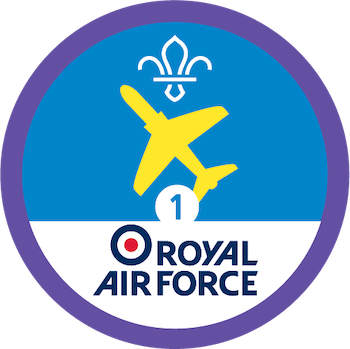
Chuck ‘n’ glide
You’ll need
- Pens or pencils
- Sandpaper
- Sheets of balsa wood
- Barbecue skewers
- Nails or screws
- Hot glue gun
- Hobby knife
- Strong sticky tape
Build your glider
- Gather everything you need to build a chuck glider. You’ll need one skewer and one nail or screw. It’s OK if people need to share equipment like glue guns.
- Take your skewer, which will be the fuselage (main body) of your glider. Use it as a guide to lightly draw out the shape of one wing on the balsa wood. Draw in pencil – and make sure your wing’s at least 25% longer than your skewer.
You can choose the shape of your wingtip – design your own curves, or just draw a squared wingtip.
- Carefully use a hobby knife to cut out the wings.
- Use sandpaper to the leading and trailing edges, making them thinner towards the end so the glider can cut cleanly through the air.
- Trace around the wing onto your balsa wood to create a second, identical, wing. Repeat steps three and four so both of your wings are ready to fly.
- Glue the two wings together so they’re at a dihedral angle – so they’re both angled upwards a bit, rather than being horizontal or flat. The wings need to be at an angle like this so the glider can self-level and stabilise itself when it’s flying.
It’s a good idea to use something like spare skewers to prop the wings up so they dry evenly. Wonky wings won’t get your glider very far!
- Cut a small strip of balsa wood and glue it on top of the wings for extra strength.
- Use a pencil to draw the shape of the tail onto the balsa wood – you’ll need two pieces. Cut them both out with the hobby knife.
- Use the hot glue to stick the two pieces of the tail onto the end of the skewer. They should be at a 90-degree angle – you’ll need to support them until they’ve dried.
- Use the hot glue to attach the wings to the middle of the skewer. Make sure everything’s aligned and straight – think about which way the tail’s facing before you stick the wings on.
- Loosely tape a nail or screw to the nose (front) of the glider.
- Find the glider’s centre of gravity by balancing it on the side of your finger – your finger should be underneath the front of the wings. Move the nail or screw forwards or backwards until the glider balances.
It’s OK if it takes a few tries – balancing your glider’s a really important step before its first flight.
Chuck your glider
- The person leading the activity should find a safe, open space.
- Everyone should take it in turns to throw their glider forward – they should chuck it, just like they’d throw a paper aeroplane. They should watch it soar – hopefully its first flight is a success.
- Once it’s safe to do so, everyone should collect their gliders. They may want to readjust the gliders’ nail or screw before trying again.
Reflection
This activity was a chance for everyone to be independent. Was it difficult for people to make decisions about the shape of the wings and tail? Did anyone come across any problems they solved without adults’ help? How did people help each other to become more independent?
This activity was also about keeping on going – even when it got tricky. Some parts, like measuring, sanding, or propping things up while they dried, may have felt slow or frustrating – especially if some things didn’t go to plan. What kept people going when things got tricky (or repetitive)? Did people support each other to achieve their goals? Henry Ford (the founder of the motor company) is quoted as saying ‘When everything seems to be going against you, remember that the airplane takes off against the wind, not with it’. What do people think this means?
Safety
All activities must be safely managed. You must complete a thorough risk assessment and take appropriate steps to reduce risk. Use the safety checklist to help you plan and risk assess your activity. Always get approval for the activity, and have suitable supervision and an InTouch process.
- Glue and solvents
Always supervise young people appropriately when they’re using glue and solvent products. Make sure there’s plenty of ventilation. Be aware of any medical conditions that could be affected by glue or solvent use and make adjustments as needed.
- Scissors
Supervise young people appropriately when they’re using scissors. Store all sharp objects securely, out of the reach of young people.
- Sharp objects
Teach young people how to use sharp objects safely. Supervise them appropriately throughout. Store all sharp objects securely, out of the reach of young people.
- Why not customise the gliders using pens or lightweight paint? People could let their creativity loose (and it’ll be easier to remember whose is whose too).
- You could hold a flying competition. As well as the glider that gets the furthest, you could recognise the fastest glider, or the one that flies straightest.
People could work in pairs, if that makes any of the fiddly bits easier.
All Scout activities should be inclusive and accessible.
You could try again with different wing shapes or sizes, or a different tail design. What difference do the changes make to the glider’s flight? Which shapes help the glider fly furthest?
For more fun with model aircraft, check out Drag it, lift it, thrust it, weigh it.
